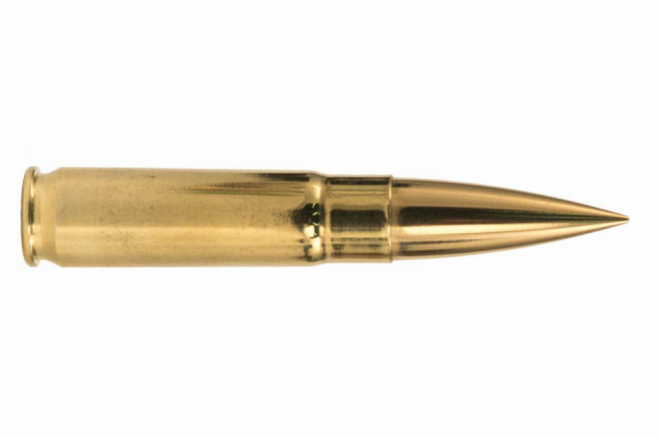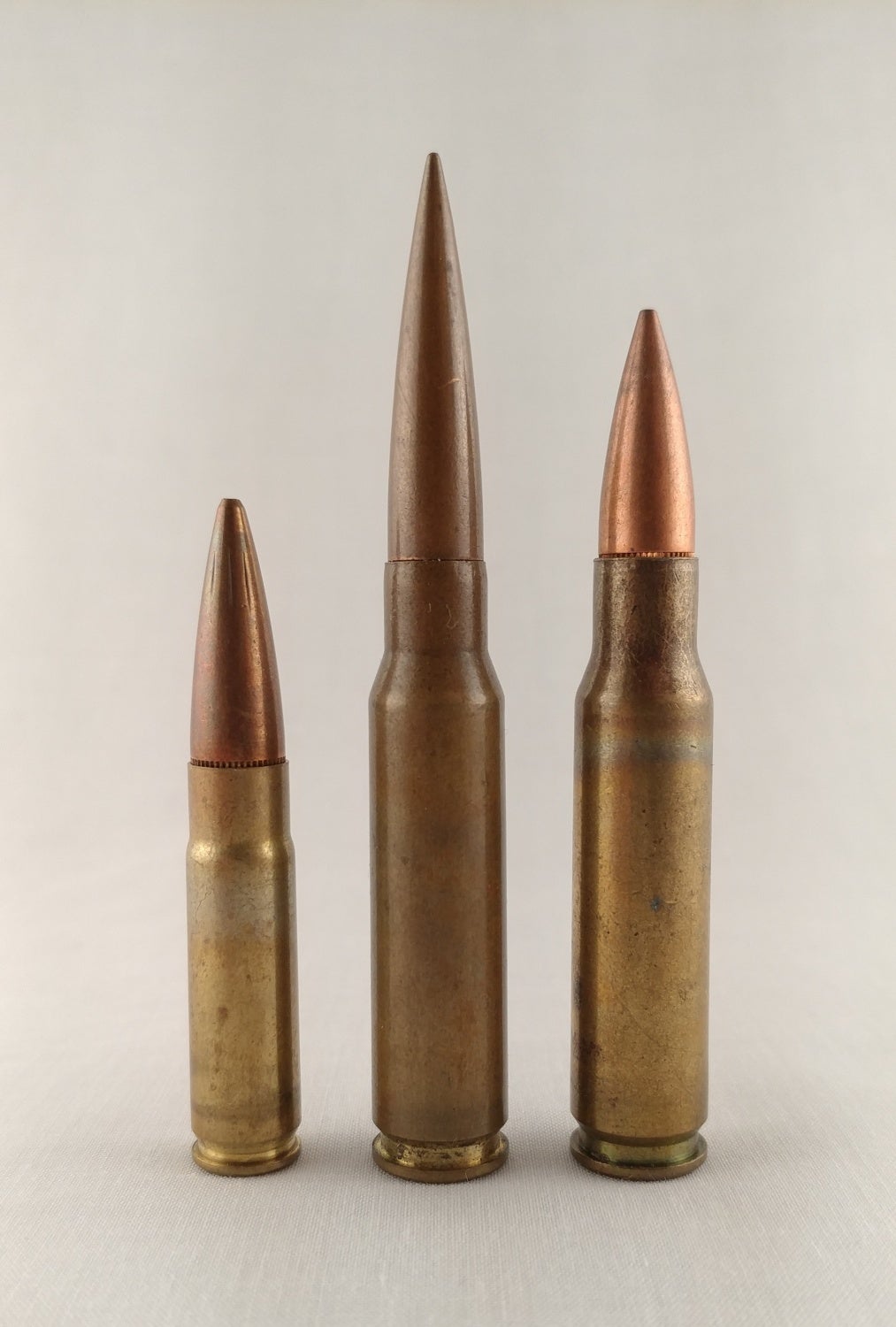Idaho company Trom Technologies (formerly PNW Arms) is advertising a new .300 Blackout round that it claims extends that cartridge’s effective range to 900 meters, more than twice the generally accepted 400 meter value for that round. They claim the new round maintains a 100% chance of hitting an IDPA silhouette at that distance, and that it retains over 400 Joules of energy making it, they say, “effective on biological organisms of all kinds”. The company released a somewhat esoteric PDF that not only extolled the virtues of their new ammunition (which also comes in subsonic and .308 Winchester flavors), but details their corporate strategy of selling consumers “the subscription experience”. What this has to do with ammunition is not made clear in the file.
Down to brass tacks now: What Trom is advertising does not seem highly probable to me. Their round does seem to sport a streamlined turned copper alloy bullet, and projectiles of this type do tend to have very high BCs for their weight. However, a little extra digging begins to draw considerable doubt in my mind. Nowhere in the entire document are values for ballistic coefficient or even projectile weight given – yet we can determine both by the data presented therein. We calculate that a projectile possessing a muzzle velocity of 2,190 ft/s and a muzzle energy of 1,935 Joules must have a weight of 134 grains. We also know that in order to retain the claimed 393 Joules at 1,000 meters, that projectile must have a G7 BC of at least 0.27. This means that the projectile’s effective claimed i7 Form Factor has to be less than 0.75 (0.747, to be exact), which is beyond exceptional. An example of an exceptional brass turned bullet is the Warner Tool Company 155gr Palma Flatline, which itself has a G7 BC of 0.270, despite being 21 grains heavier. This projectile has an i7 Form Factor of 0.865, which means if the Trom values are correct, it is a 16% less efficient aerodynamic shape than the 134gr Trom. Yet, the WTC 155gr Palma Flatline is a much longer, better streamlined bullet which has an ogive 0.064″ too long to even fit within the .300 Blackout’s overall length.
.300 Blackout, compared with a 7.62x51mm CETME round and its CSP-004 bullet, with a standard 7.62 NATO on right. The CETME projectile is an actual example of a bullet with a sub 0.800 i7 Form Factor. Note that it is much too long to fit within the .300 Blackout’s envelope.
These facts lead me to believe that the velocity and energy figures presented in the chart by Trom are unrealistic. This does not necessarily mean they were intending to be deceptive; it is relatively easy to accidentally produce inaccurate data which may seem to indicate that a projectile design performs much better than it actually does. It’s likely that they did experience a “100%” hit probability on an IDPA silhouette at 900 meters, although this is not so astounding an achievement as it sounds. Many, many bullets are capable of retaining their precision through the transition from the supersonic to transonic and then subsonic flight regimes. This was a key element to “heavy ball” machine gun projectiles like .30 M1 Ball and .303 Mk. VIII of nearly a 100 years ago, for example. So it is entirely possible that the Trom projectile produces a dispersion at 900 meters (which is beyond its supersonic range) that makes a hit on an IDPA silhouette highly likely, but this capability is by no means unique to that bullet, nor even particularly special or noteworthy.
I think until Trom submits their round to a third party for Doppler radar readings, I will remain skeptical of their claims.
 Your Privacy Choices
Your Privacy Choices

